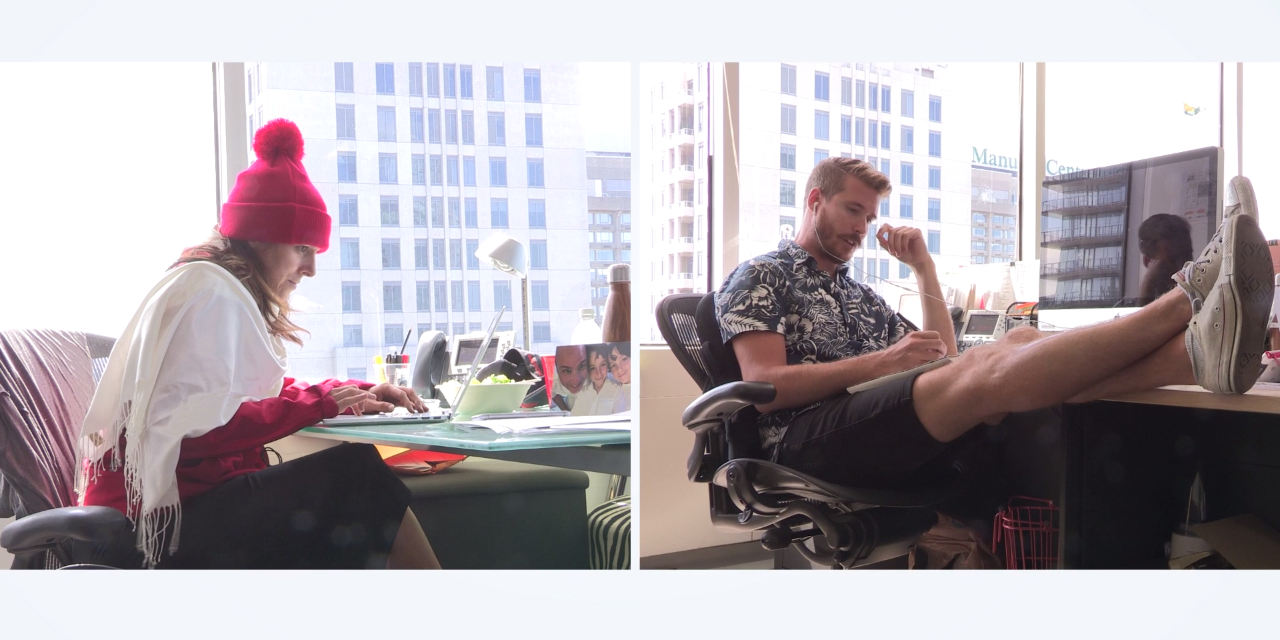Believe it or not, the temperature in your office is probably being regulated by a bunch of 40-year-old dudes from the 1960s. Seriously. And it has become a point of contention in the the battle on sexual inequality in the workplace.
BBDO Toronto has scored one on behalf of those women who’ve been bundling up at their desks even on summer’s hottest days.
The agency, like other companies working in office buildings, was home to a familiar sight: men wearing short sleeves in the same room where women shivered under wool hats and blankets (see actual photo evidence above of BBDO executive creative director Denise Rossetto and copywriter Jamie King). The agency successfully lobbied its office’s management company to turn up the temperature and used that success to fuel an advocacy campaign called “Change The Work Climate.”
The work calls attention to the reasons behind office buildings’ climate control policies – “a standard model developed in the 1960s based on the metabolic rate of 40-year old, 154 pound men.”
The modern workforce is drastically more varied than that sample, both in terms of body types and genders. Yet that standard model endures.
“This has been an issue since I started in advertising,” said Domenique Raso, a copywriter at BBDO who spearheaded the effort after getting fed up with keeping a space heater under her desk. “I’ve always been cold at my desk, and so have most of the women I’ve worked with.”
Her team asked building management throughout the summer to turn up the temperature “and we were always told ‘the men wearing suits like it cooler.'” Raso said it’s a small example of institutionalized sexism in the business world. “We just wanted to make the workplace a little more comfortable for women.”
Aside from a shareable video that lives at ChangeTheWorkClimate.com, the small-scale campaign has created a form letter for those looking to take the fight to their own building management firms.
“While it may seem like a trivial issue, studies show that people are less productive when they’re cold,” reads copy on the campaign website. “Since reports also show that it’s easier for people to adjust to being too warm than it is for them to adjust to being too cold, we want to make offices warmer and therefore more comfortable for the women inside them.”











